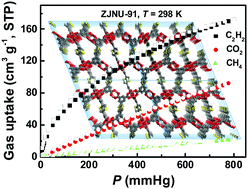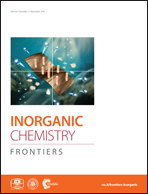Two NbO-type MOFs based on linear and zigzag diisophthalate ligands: exploring the effect of ligand-originated MOF isomerization on gas adsorption properties†
Abstract
NbO-type MOFs constructed from dicopper paddlewheel secondary building units and diisophthalate ligands not only exhibit great promise for the separation of environment and energy-related gas pairs but also more importantly provide an excellent platform for the fundamental investigation of structure–property relationships. In this work, two NbO-type MOFs (ZJNU-91 and ZJNU-92) derived from linear and zigzag-shaped thieno[3,2-b]thiophene-functionalized diisophthalate ligands were solvothermally prepared and structurally characterized. Their gas adsorption properties with respect to C2H2, CO2, and CH4 were systematically investigated, revealing that they exhibit promising potential for selective adsorptive separation of C2H2–CH4 and CO2–CH4 binary gas mixtures which are associated with acetylene production and natural gas upgrading. In particular, compared to its isomer ZJNU-92, ZJNU-91 displays larger C2H2 and CO2 uptake capacities as well as higher C2H2/CH4 and CO2/CH4 adsorption selectivities under ambient conditions, despite its lower surface area and pore volume. On the basis of structural analyses, the better performance of ZJNU-91 compared to its isomer ZJNU-92 can be ascribed to its more optimized pore size.

- This article is part of the themed collection: Inorganic Chemistry Frontiers HOT articles for 2018


 Please wait while we load your content...
Please wait while we load your content...